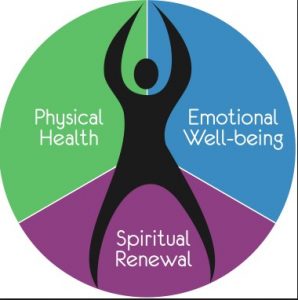
 By scanning the brains of subjects while they were hypnotized, researchers at the School of Medicine were able to see the neural changes associated with hypnosis.
By scanning the brains of subjects while they were hypnotized, researchers at the School of Medicine were able to see the neural changes associated with hypnosis.
Your eyelids are getting heavy, your arms are going limp and you feel like you’re floating through space. The power of hypnosis to alter your mind and body like this is all thanks to changes in a few specific areas of the brain, researchers at the Stanford University School of Medicine have discovered.
The scientists scanned the brains of 57 people during guided hypnosis sessions similar to those that might be used clinically to treat anxiety, pain or trauma. Distinct sections of the brain have altered activity and connectivity while someone is hypnotized, they report in a study published online July 28 in Cerebral Cortex.
“Now that we know which brain regions are involved, we may be able to use this knowledge to alter someone’s capacity to be hypnotized or the effectiveness of hypnosis for problems like pain control,” said the study’s senior author, David Spiegel, MD, professor and associate chair of psychiatry and behavioral sciences.
A serious science
For some people, hypnosis is associated with loss of control or stage tricks. But doctors like Spiegel know it to be a serious science, revealing the brain’s ability to heal medical and psychiatric conditions.
“Hypnosis is the oldest Western form of psychotherapy, but it’s been tarred with the brush of dangling watches and purple capes,” said Spiegel, who holds the Jack, Samuel and Lulu Wilson Professorship in Medicine. “In fact, it’s a very powerful means of changing the way we use our minds to control perception and our bodies.”
Despite a growing appreciation of the clinical potential of hypnosis, though, little is known about how it works at a physiological level. While researchers have previously scanned the brains of people undergoing hypnosis, those studies have been designed to pinpoint the effects of hypnosis on pain, vision and other forms of perception, and not the state of hypnosis itself.
“There had not been any studies in which the goal was to simply ask what’s going on in the brain when you’re hypnotized,” said Spiegel.
 Finding the most susceptible
Finding the most susceptible
To study hypnosis itself, researchers first had to find people who could or couldn’t be hypnotized. Only about 10 percent of the population is generally categorized as “highly hypnotizable,” while others are less able to enter the trancelike state of hypnosis.
Spiegel and his colleagues screened 545 healthy participants and found 36 people who consistently scored high on tests of hypnotizability, as well as 21 control subjects who scored on the extreme low end of the scales.
Then, they observed the brains of those 57 participants using functional magnetic resonance imaging, which measures brain activity by detecting changes in blood flow. Each person was scanned under four different conditions — while resting, while recalling a memory and during two different hypnosis sessions.
“It was important to have the people who aren’t able to be hypnotized as controls,” said Spiegel. “Otherwise, you might see things happening in the brains of those being hypnotized but you wouldn’t be sure whether it was associated with hypnosis or not.”
Brain activity and connectivity
Spiegel and his colleagues discovered three hallmarks of the brain under hypnosis. Each change was seen only in the highly hypnotizable group and only while they were undergoing hypnosis.
First, they saw a decrease in activity in an area called the dorsal anterior cingulate, part of the brain’s salience network. “In hypnosis, you’re so absorbed that you’re not worrying about anything else,” Spiegel explained.
 Secondly, they saw an increase in connections between two other areas of the brain — the dorsolateral prefrontal cortex and the insula. He described this as a brain-body connection that helps the brain process and control what’s going on in the body.
Secondly, they saw an increase in connections between two other areas of the brain — the dorsolateral prefrontal cortex and the insula. He described this as a brain-body connection that helps the brain process and control what’s going on in the body.
Finally, Spiegel’s team also observed reduced connections between the dorsolateral prefrontal cortex and the default mode network, which includes the medial prefrontal and the posterior cingulate cortex.
This decrease in functional connectivity likely represents a disconnect between someone’s actions and their awareness of their actions, Spiegel said. “When you’re really engaged in something, you don’t really think about doing it — you just do it,” he said.
During hypnosis, this kind of disassociation between action and reflection allows the person to engage in activities either suggested by a clinician or self-suggested without devoting mental resources to being self-conscious about the activity.
Treating pain and anxiety without pills
In patients who can be easily hypnotized, hypnosis sessions have been shown to be effective in lessening chronic pain, the pain of childbirth and other medical procedures; treating smoking addiction and post-traumatic stress disorder; and easing anxiety or phobias. The new findings about how hypnosis affects the brain might pave the way toward developing treatments for the rest of the population — those who aren’t naturally as susceptible to hypnosis.
“We’re certainly interested in the idea that you can change people’s ability to be hypnotized by stimulating specific areas of the brain,” said Spiegel.
A treatment that combines brain stimulation with hypnosis could improve the known analgesic effects of hypnosis and potentially replace addictive and side-effect-laden painkillers and anti-anxiety drugs, he said. More research, however, is needed before such a therapy could be implemented.
The study’s lead author is Heidi Jiang, a former research assistant at Stanford who is currently a graduate student in neuroscience at Northwestern University.
Other Stanford co-authors are clinical assistant professor of psychiatry and behavioral sciences Matthew White, MD; and associate professor of neurology Michael Greicius, MD, MPH.
The study was funded by the National Center for Complementary and Integrative Health (grant RCIAT0005733), the National Institute of Biomedical Imaging and Bioengineering (grant P41EB015891), the Randolph H. Chase, M.D. Fund II, the Jay and Rose Phillips Family Foundation and the Nissan Research Center.
Stanford’s Department of Psychiatry and Behavioral Sciences and Department of Neurology and Neurological Sciences also supported the work.
By; Sarah P. Williams
 Children are often better candidates for hypnosis than adults, says one clinical psychologist, and the process can help resolve such problems as pain, anxiety, bed wetting, and asthma.
Children are often better candidates for hypnosis than adults, says one clinical psychologist, and the process can help resolve such problems as pain, anxiety, bed wetting, and asthma.
Robert Shacter of New York’s Mount Sinai School of Medicine talked about children and hypnosis on The Saturday Early Show. He says children tend to respond to hypnotic suggestion better than adults because they are more in touch with their imaginations.
Children can be hypnotized as early as age 3, he says, adding, “But in my personal experience, I have found that children ages 5 or older respond best to the treatment.”
The easiest way to hypnotize a child is to have them focus on a point, he explains. They will do that until their eyes begin to feel heavy, and they become sleepy. You now have them in a trance-like state. Once they are in this state, you begin to tell the child stories that can alleviate whatever problems they may have.
What role, if any, does the parent play during a hypnosis session?
As in any therapy, it is important for parents to know what is going on. But in the actual session the parent is either not there or in the background. So, they really don’t play any part in the actual therapy.
don’t play any part in the actual therapy.
How many times does a typical child visit a hypnotist?
Most children attend 4 to 8 sessions with a qualified hypnotist. During that time, the hypnotist can teach a child how to hypnotize himself.
How do I know if my child if a candidate for hypnosis?
Most children are good candidates. It just depends on whether the problems they are having can be helped by hypnosis.
Here are some of the problems that might be helped by hypnosis:
- Hypnosis is very effective at alleviating the pain of children undergoing cancer treatments. What we do is help the child go somewhere else, away from the pain. By accessing the unconscious, the child creates images that forces them to focus on something other than the pain they are feeling.
 For example, if you squeezed your hand very tightly to the point that it hurt and then someone asked you to focus on something else, you would not be as aware of the pain in your hand.
For example, if you squeezed your hand very tightly to the point that it hurt and then someone asked you to focus on something else, you would not be as aware of the pain in your hand.
- A child who is anxious often breathes more quickly and has a higher heart rate. With hypnosis, we can teach them to breathe more slowly, lower their heart rate and take them away from whatever is making them anxious.
- Bed Wetting.Many doctors prescribe medicine for children who have a bed-wetting problem. But now more physicians are turning to hypnosis, which has very positive results. Part of the reason that it works so well is that kids play an active role in their treatment rather than just taking a pill.
- When children with asthma feel their throats constricting, they begin to feel anxious and breathe more heavily. With hypnosis, you teach the child to calm down and bring them to another place.
How effective is hypnosis in children?
In the right child, hypnotism can be very successful. Remember: There are some children who have a harder time letting go. But for those who can, the results can be very positive. Another plus of hypnosis is that unlike drugs, the risk of harm is low.
Why aren’t more doctors using hypnotism?
It’s just not taught that much in schools, and some people still don’t want to recognize it as a viable alternative. However, it is becoming more popular, and many insurers will cover it.
By: Ellen Crean CBS News

 Clinical hypnotherapy has been gradually gaining momentum in the medical mainstream as a legitimate tool supporting healthy change. I have been in practice since 2001, and in the past 5 years the number of clients looking for help related to medical conditions has grown significantly.
Clinical hypnotherapy has been gradually gaining momentum in the medical mainstream as a legitimate tool supporting healthy change. I have been in practice since 2001, and in the past 5 years the number of clients looking for help related to medical conditions has grown significantly.
The value of hypnotherapy in the clinical setting is nothing new. In fact, research has been validating this application for 25 years or more. Its just taken a while for results to filter through to the mainstream.
A University of Florida study revealed that learning self-hypnosis gives a patient greater control over stress, anxiety and pain of medical operations and childbirth.
“Training patients in hypnosis prior to undergoing surgery is a way of helping them develop a sense of control,” says Dr. Paul Schauble, “It also helps them better understand what they can do to bring about a more satisfying and rapid recovery.”
Dr. Schauble also said, “We’ve found, in working with individual patients, that they often feel literally stripped of control when they go into the hospital.”
“The surgeon may do a good job of explaining the surgery, but patients’ anxiety may make it difficult for them to absorb or comprehend. This can result in undue apprehension that can create complications or prolonged recovery.”
Hypnotherapy is so effective because it accesses the subconscious mind, the home of all habits, values, values and beliefs. It is also the control center, regulating all physical and emotional functions whether we are consciously aware of it or not.
Another study tested the effectiveness of a 15-minute pre-surgery hypnosis session versus an empathic listening session with 200 breast cancer patients. Results showed hypnosis patients reported less post-surgical pain, nausea, fatigue and discomfort.
 This study also reported that the hypnosis group saved $772/patient mainly due to reduced surgical time. These patients also required less analgesic lidocaine and the sedative propofol during surgery. (Journal of the National Cancer Institute 2007)
This study also reported that the hypnosis group saved $772/patient mainly due to reduced surgical time. These patients also required less analgesic lidocaine and the sedative propofol during surgery. (Journal of the National Cancer Institute 2007)
Hypnotherapy isn’t difficult to do, it feels really good, and in addition to physically preparing patients for surgery it also offers sense of peaceful calming confidence. Individuals, both young and old, feel in relaxed, focused and confidently in control.
This study looked at the effects of hypnosis/guided imagery on the postoperative course of children. Reports validated significantly lower postoperative pain ratings and shorter hospital stays. Anxiety was decreased for the guided imagery group but increased postoperatively for the control group. This study demonstrates the positive effects of hypnosis/guided imagery for the pediatric surgical patient. (Journal of Developmental & Behavioral Pediatrics 1996)
By: Paul Gustafson RN CH
 Hypnosis is synonymous with stage entertainment where the performer puts volunteers from the audience into a trance and commands them to do embarrassing things.
Hypnosis is synonymous with stage entertainment where the performer puts volunteers from the audience into a trance and commands them to do embarrassing things.
This makes it sound like a joke, but in fact hypnosis is a real phenomenon and it is proving increasingly useful to psychologists and neuroscientists, granting new insights into mental processes and medically unexplained neurological disorders.
That’s according to David Oakley and Peter Halligan who have written an authoritative new review, debunking hypnosis myths, and covering ways that neuroscience is shedding light on hypnosis and ways hypnosis is aiding neuroscience.
Despite popular folklore, hypnosis is not a form of sleep (this misconception isn’t helped by the fact that hypnosis studies typically label the control condition the “waking state”). However, Oakley and Halligan say new brain imaging findings do support the contention that hypnosis is a distinct form of consciousness.
After successful hypnotic induction, which involves using mental strategies to reach “a focused and absorbed attentional state”, participants show reduced activity in parts of the brain’s default mode network together with increased activity in prefrontal attentional systems. Oakley and Halligan concede that “it remains to be seen if these particular changes are unique to hypnosis.”
After hypnotic induction (or in some cases even without it) participants exposed to suggestive statements can experience altered perceptual or bodily sensations.
For instance, told that their arm is getting heavier and they cannot move it, a suggestible participant may experience paralysis of the arm. Sceptics may wonder  about the veracity of these experiences but brain imaging results are indicating they are real and not merely imagined.
about the veracity of these experiences but brain imaging results are indicating they are real and not merely imagined.
Consider a study of participants hypnotized and induced to see colorful Mondrian images in grey. Brain scan results of these participants showed altered activity in fusiform regions involved in color processing, and crucially such changes weren’t observed when the participants merely imagined the Mondrians in grey.
Another study showed that the famous Stroop effect disappeared when hypnotized participants received the suggestion that they would see words as meaningless symbols.
Another line of research explores the correlates of hypnotic suggestibility. Apparently, it is a highly stable trait and it is heritable.
It doesn’t correlate with the main personality dimensions but does correlate with creativity, empathy, mental absorption, fantasy proneness and people’s expectation that they will be prone to hypnotic procedures.
 Many neurological symptoms are medically unexplained with no apparent organic cause and it is here that hypnosis is proving especially useful as a new way to model, explore and treat people’s symptoms.
Many neurological symptoms are medically unexplained with no apparent organic cause and it is here that hypnosis is proving especially useful as a new way to model, explore and treat people’s symptoms.
For instance people can be hypnotized to experience limb paralysis in a way that appears similar to the paralysis observed in conversion disorder.
People can also be hypnotically induced to experience the sense that there is a stranger looking back at them when they peer in a mirror – an apparent analogue of the real “mirrored-self-misidentification delusion”.
Hypnosis research is also exposing the apparent volitional element to mental phenomena previously considered automatic.
For example, a patient who experienced face-color synaesthesia received post-hypnotic suggestion that abolished the colors she usually sees with faces (as confirmed by a color-naming task in which faces no longer had an interfering effect).
“The psychological disposition to modify and generate experiences following targeted suggestion remains one of the most remarkable but under-researched human cognitive abilities given its striking causal influence on behavior and consciousness,” said Oakley and Halligan. (Oakley DA, and Halligan PW 2013)

Hypnosis has been an effective tool in the obesity battle. Here are 4 studies supporting the effect of weight loss hypnosis.
 Weight loss continues 2 years later: 109 people completed a behavioral treatment for weight management either with or without the addition of hypnosis. At the end of the 9-week program, both interventions resulted in significant weight reduction. At 8-month and 2-year follow-ups, the hypnosis subjects were found to have continued to lose significant weight, while those in the behavioral-treatment-only group showed little further change. (Journal of Consulting and Clinical Psychology)
Weight loss continues 2 years later: 109 people completed a behavioral treatment for weight management either with or without the addition of hypnosis. At the end of the 9-week program, both interventions resulted in significant weight reduction. At 8-month and 2-year follow-ups, the hypnosis subjects were found to have continued to lose significant weight, while those in the behavioral-treatment-only group showed little further change. (Journal of Consulting and Clinical Psychology)
Weight loss hypnosis 30 times more effective: Researchers investigated effects of hypnosis in weight loss for 60 females who were at least 20% overweight. Treatment included group hypnosis with metaphors for ego-strengthening, decision making and motivation, ideomotor exploration in individual hypnosis, and group hypnosis with maintenance suggestions. Hypnosis was more effective than a control group 17lbs vs. 0.5 lbs on follow-up. (Cochrane, Gordon; Friesen, J 1986)
Hypnosis clients lost more than 90% of non-hypnosis clients: Researchers analyzed 18 studies comparing a cognitive behavioral therapy, such as relaxation training, guided imagery, self-monitoring or goal setting with the same therapy plus hypnosis. Those who received the hypnosis lost more  weight than 90 percent of the non-hypnosis, and maintained the weight loss two years after treatment ended. (Allison DB, Faith MS. 1996)
weight than 90 percent of the non-hypnosis, and maintained the weight loss two years after treatment ended. (Allison DB, Faith MS. 1996)
Hypnosis doubles effect of dieting: An analysis of five weight loss studies reported in the Journal of Consulting and Clinical Psychology in 1996 showed that hypnosis can more than double the effects of traditional weight loss approaches. (Journal of Consulting and Clinical Psychology in 1996)
Contact Paul for a free consultation: 888-290-3972 // info@burlingtonhypnosis.com

 By scanning the brains of subjects while they were hypnotized, researchers at the School of Medicine were able to see the neural changes associated with hypnosis.
By scanning the brains of subjects while they were hypnotized, researchers at the School of Medicine were able to see the neural changes associated with hypnosis. Finding the most susceptible
Finding the most susceptible Secondly, they saw an increase in connections between two other areas of the brain — the dorsolateral prefrontal cortex and the insula. He described this as a brain-body connection that helps the brain process and control what’s going on in the body.
Secondly, they saw an increase in connections between two other areas of the brain — the dorsolateral prefrontal cortex and the insula. He described this as a brain-body connection that helps the brain process and control what’s going on in the body.
 Children are often better candidates for hypnosis than adults, says one clinical psychologist, and the process can help resolve such problems as pain, anxiety, bed wetting, and asthma.
Children are often better candidates for hypnosis than adults, says one clinical psychologist, and the process can help resolve such problems as pain, anxiety, bed wetting, and asthma. don’t play any part in the actual therapy.
don’t play any part in the actual therapy. For example, if you squeezed your hand very tightly to the point that it hurt and then someone asked you to focus on something else, you would not be as aware of the pain in your hand.
For example, if you squeezed your hand very tightly to the point that it hurt and then someone asked you to focus on something else, you would not be as aware of the pain in your hand.
 Clinical hypnotherapy has been gradually gaining momentum in the medical mainstream as a legitimate tool supporting healthy change. I have been in practice since 2001, and in the past 5 years the number of clients looking for help related to medical conditions has grown significantly.
Clinical hypnotherapy has been gradually gaining momentum in the medical mainstream as a legitimate tool supporting healthy change. I have been in practice since 2001, and in the past 5 years the number of clients looking for help related to medical conditions has grown significantly.
 This study also reported that the hypnosis group saved $772/patient mainly due to reduced surgical time. These patients also required less analgesic lidocaine and the sedative propofol during surgery. (Journal of the National Cancer Institute 2007)
This study also reported that the hypnosis group saved $772/patient mainly due to reduced surgical time. These patients also required less analgesic lidocaine and the sedative propofol during surgery. (Journal of the National Cancer Institute 2007) Hypnosis is synonymous with stage entertainment where the performer puts volunteers from the audience into a trance and commands them to do embarrassing things.
Hypnosis is synonymous with stage entertainment where the performer puts volunteers from the audience into a trance and commands them to do embarrassing things. about the veracity of these experiences but brain imaging results are indicating they are real and not merely imagined.
about the veracity of these experiences but brain imaging results are indicating they are real and not merely imagined. Many neurological symptoms are medically unexplained with no apparent organic cause and it is here that hypnosis is proving especially useful as a new way to model, explore and treat people’s symptoms.
Many neurological symptoms are medically unexplained with no apparent organic cause and it is here that hypnosis is proving especially useful as a new way to model, explore and treat people’s symptoms.
 Weight loss continues 2 years later: 109 people completed a behavioral treatment for weight management either with or without the addition of hypnosis. At the end of the 9-week program, both interventions resulted in significant weight reduction. At 8-month and 2-year follow-ups, the hypnosis subjects were found to have continued to lose significant weight, while those in the behavioral-treatment-only group showed little further change. (Journal of Consulting and Clinical Psychology)
Weight loss continues 2 years later: 109 people completed a behavioral treatment for weight management either with or without the addition of hypnosis. At the end of the 9-week program, both interventions resulted in significant weight reduction. At 8-month and 2-year follow-ups, the hypnosis subjects were found to have continued to lose significant weight, while those in the behavioral-treatment-only group showed little further change. (Journal of Consulting and Clinical Psychology) weight than 90 percent of the non-hypnosis, and maintained the weight loss two years after treatment ended. (Allison DB, Faith MS. 1996)
weight than 90 percent of the non-hypnosis, and maintained the weight loss two years after treatment ended. (Allison DB, Faith MS. 1996)







